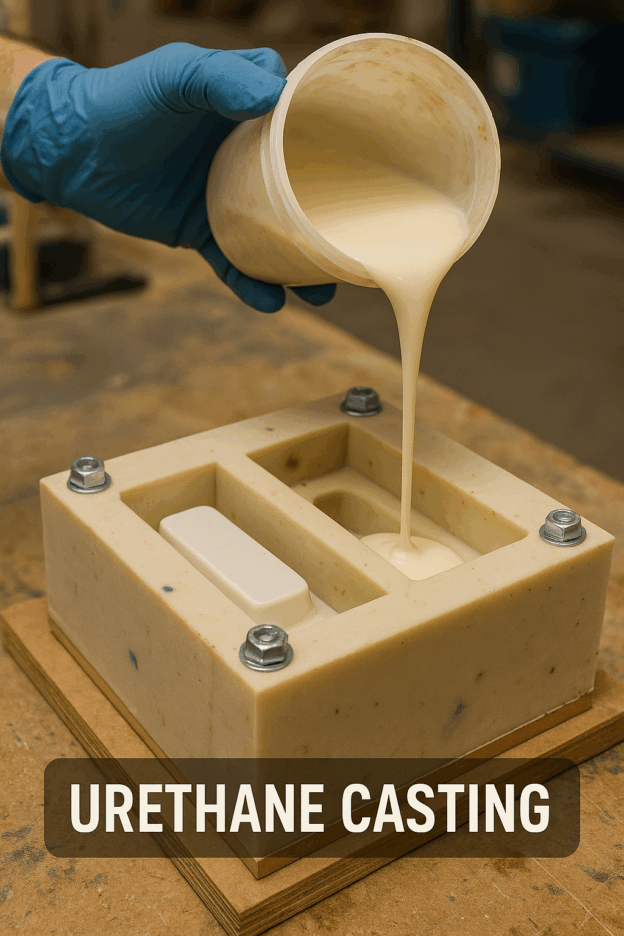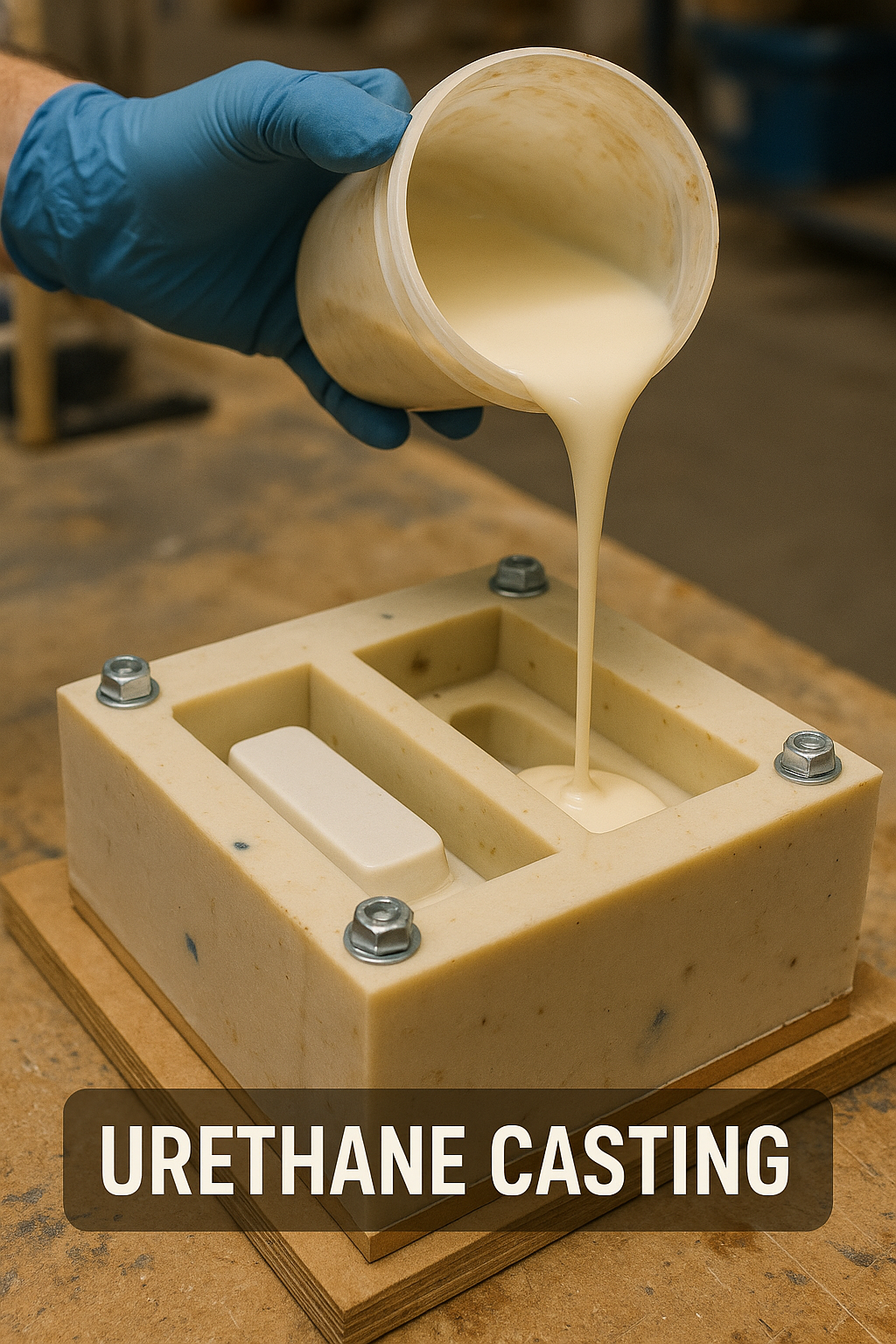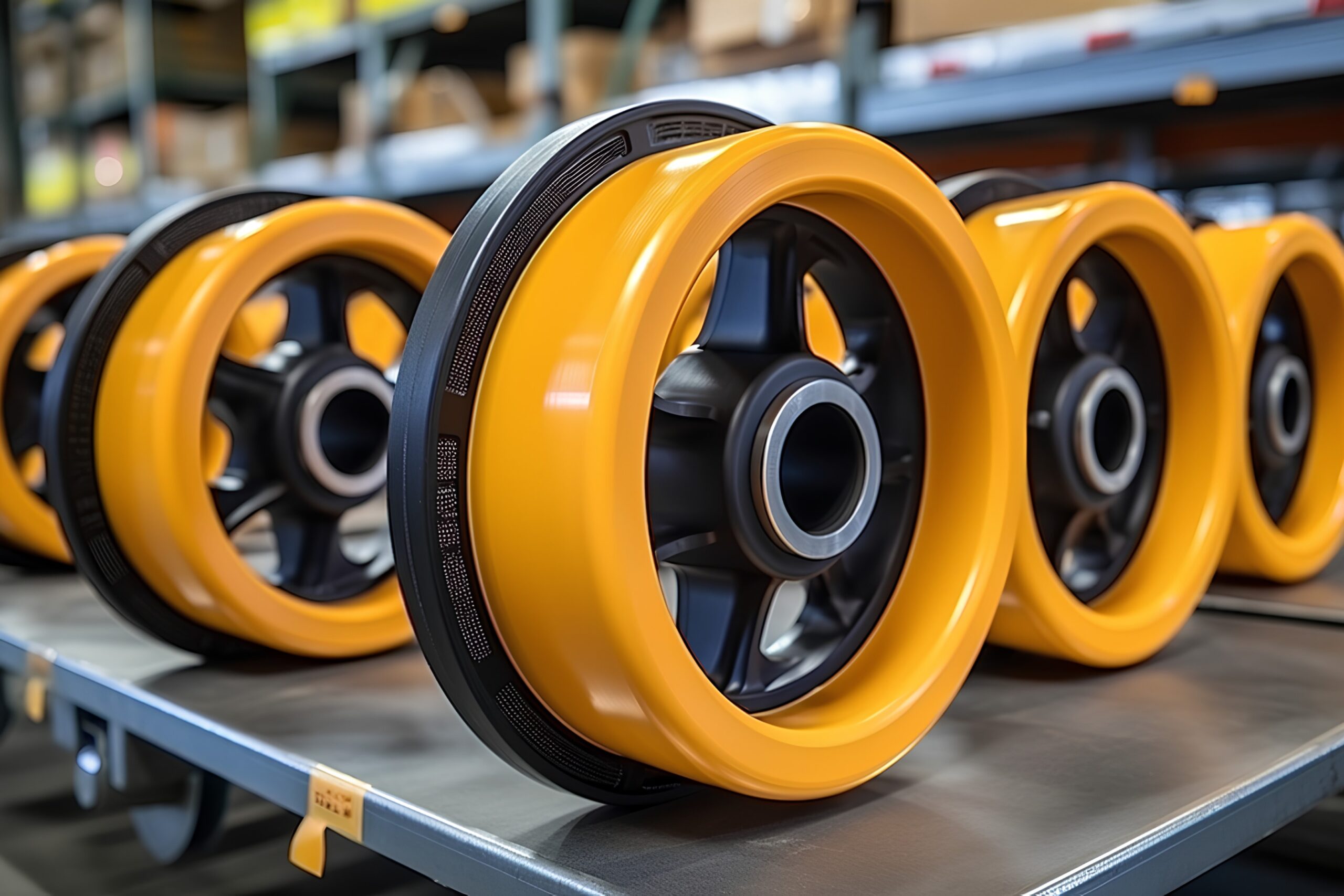Understanding the true cost of urethane casting is essential for anyone planning a prototyping or low-volume manufacturing project. From material selection and mold fabrication to part complexity and production volume, numerous factors contribute to the overall investment. In this guide, we break down the key cost drivers in urethane casting, offering you clear insights to help you make informed budgeting decisions and avoid unexpected expenses as you move from concept to production.
To ensure your urethane casting project is both efficient and cost-effective, partner with Uniflex, Inc. Our expertise and full-service capabilities help you navigate every step—from design to production—so you can confidently control costs and achieve superior results. Call us today at 248-486-6000 to discuss your project needs and get a personalized quote.
👉Also Read: Top Reasons to Choose Cast Polyurethane for Agricultural Use
Key Factors Influencing Urethane Casting Costs
When planning a urethane casting project, understanding the elements that contribute to overall cost is essential for managing both budget and expectations. The following are the primary factors that influence urethane casting expenses:
Material Selection in Urethane Casting
Material selection significantly influences both the initial expenditures and the long-term value of the parts produced in urethane casting. Different formulations of urethane casting materials can result in varying specific material properties such as hardness, flexibility, and chemical resistance, each with its own cost implications. For instance, polyether-based polyurethanes are typically less expensive than polyester variants, but the latter offer superior tensile strength for specific applications. Urethane resins can also play a role in determining these properties.
Incorporating additives like fillers can enhance the performance characteristics of urethane castings but may also increase costs depending on the desired characteristics. Considering the intended use and environment of urethane parts helps in selecting materials that balance performance and cost-effectiveness.
Technical parameters like durability and production quality are key considerations for manufacturers when choosing materials for urethane casting. Selecting the right material can lower costs while ensuring that parts meet performance requirements. Flexible versus rigid materials must be chosen based on the desired properties and applications. Careful consideration of these factors helps achieve a balance between cost and performance, leading to cost-effective manufacturing solutions with high-performance materials.
Design Complexity and Its Impact on Costs
Design complexity is a significant factor in determining urethane casting costs. Intricate designs often lead to higher costs due to the need for more detailed molds and longer production times. Key design considerations include wall thickness, draft angles, and the construction of ribs and bosses, all of which can influence the overall cost.
Ensuring uniform wall thickness and appropriate rib spacing can help reduce costs while maintaining the integrity of the part. Effective design choices can lower expenditures and streamline the production process, making urethane casting a viable option for parts with complex geometries.
Production Volume Considerations
Production volume plays a crucial role in determining the final pricing of urethane casting. Urethane casting is particularly well-suited for short runs and low-to-medium production volumes. Manufacturers often set minimum order quantities to cover the setup costs associated with production, which can impact the overall cost.
As production volumes increase, the cost per unit typically decreases due to economies of scale. This makes urethane casting a cost-effective choice for projects that require producing small quantities without the high upfront costs associated with other manufacturing methods.
Mold Creation Expenses
Mold creation is a significant expense in the urethane casting process. The cost of creating a mold can range from $250 to $1,500, depending on the complexity and materials used. Silicone molds are typically less expensive and quicker to produce than metal molds, making them a preferred option for prototyping and low-volume production.
Soft molds, such as silicone molds, offer benefits like being cheaper and easier to produce compared to metal molds. Common types of molds in urethane casting include book molds, two-part molds, and skin molds, each suited for different applications and complexities. The choice of mold type and material can significantly influence the final pricing of urethane casting.
Comparing Urethane Casting with Other Manufacturing Methods
When selecting a manufacturing method for prototyping or low-volume production, it’s important to evaluate cost, turnaround time, material performance, and scalability. Urethane casting offers unique advantages, but how does it stack up against alternatives like injection molding and 3D printing?
Urethane Casting vs. Injection Molding
Urethane casting and injection molding each have distinct advantages depending on the project’s requirements. Urethane casting is particularly economical for low-to-medium volume production, allowing for easier design adjustments and lower initial costs due to inexpensive silicone molds. This method is flexible and cost-efficient for prototyping and small runs, whereas pouring silicone in injection molding excels in large-scale production efficiency, especially when using liquid silicone.
Injection molding is more efficient for high-volume production, enabling faster output of large quantities of injection molded products. However, unlike injection molding, it requires higher upfront costs for an injection molding tool and is less flexible for design changes. Evaluating project requirements, budget constraints, and production volume needs can help determine the suitability of either method.
Urethane Casting vs. 3D Printing
Urethane casting and 3D printing are often compared for their prototyping capabilities. Urethane casting typically offers better surface finishes compared to 3D printing, which often requires additional post-processing to achieve a similar quality. This makes urethane casting more suitable for parts that require a high-quality finish and durability.
While 3D printing excels in rapid prototyping and producing highly complex geometries, urethane casting provides better mechanical properties and is more cost-effective for small-to-medium production runs. Understanding the differences between these methods, including additive manufacturing and 3D printing techniques, can help choose the best approach for specific project needs.
Practical Tips for Managing Urethane Casting Costs
Effective cost management in urethane casting involves several strategies, such as design optimization, efficient production, and planning for post-processing. Investing time in optimizing designs by simplifying molds and minimizing material wastage can significantly reduce costs.
Engaging with suppliers early in the design process can uncover cost-saving alternatives and suggest potential design adjustments.
Design Optimization Strategies
Effective design optimization is essential for controlling urethane casting costs without compromising product functionality. By simplifying part geometries, manufacturers can significantly reduce tooling complexity, shorten production timelines, and minimize material waste. Streamlined designs not only accelerate mold fabrication but also contribute to more predictable casting outcomes, lowering the risk of defects or costly rework.
Material selection also plays a crucial role in cost efficiency. Choosing resins that meet essential performance requirements—without unnecessary additives or overengineering—can help avoid excess material costs while maintaining product integrity. Additionally, using methods like fused deposition modeling (FDM) during the early design phase allows teams to identify and correct potential design flaws quickly and affordably before moving into silicone mold production.
At Uniflex, Inc., we support these cost-saving strategies through our in-house engineering, machining, and rapid prototyping services. Our team works closely with clients to refine part designs, select optimal materials, and produce high-fidelity prototypes using CNC machining. This collaborative process ensures design validation and performance testing before scaling to full production, helping clients avoid costly delays and achieve faster time to market.
Efficient Material Use
Material efficiency is a critical driver of cost savings in urethane casting. Reducing material waste begins with precise calculations of part volume and optimal gating design to control resin flow and avoid overfilling molds. Choosing the right durometer and resin formulation for the application helps ensure performance without overspending on high-spec materials that may not be necessary.
Using modular or multi-cavity mold designs can also reduce material and labor costs by enabling multiple parts to be cast simultaneously. Moreover, maintaining tight control over environmental conditions, such as humidity and temperature, during casting can minimize shrinkage and defects, leading to fewer rejected parts and reduced material loss.
Planning for Post-Processing
Integrating finishing processes such as trimming and polishing early in the planning phase can prevent unexpected expenses later. After the cast urethane part is cured, it typically undergoes sanding, polishing, and painting.
A reliable source that adheres to quality standards helps avoid unforeseen costs in urethane casting.
👉Also Read: Choosing Between Custom Polyurethane or Rubber Wheels: Making the Right Choice
Common Pricing Models in Urethane Casting
Understanding various pricing models helps in budgeting effectively for urethane casting projects. Common models include per-unit pricing, fixed pricing for tooling, and volume-based discounts. Each model has unique advantages depending on the project’s scale and requirements.
Per-Unit Pricing
Per-unit pricing is particularly relevant for small production runs, where costs for urethane parts typically fall between $20 and $50 each, impacting the unit cost. This model is essential for projects that require producing parts in limited quantities, ensuring clear and manageable costs.
Fixed Pricing for Tooling
Fixed pricing for tooling provides clarity and predictability in tooling cost, essential for effective budgeting in urethane casting projects. This model is beneficial for small batch productions where costs can be clearly defined and managed, following a master pattern in production tooling.
Volume-Based Discounts
Larger orders in urethane casting often qualify for volume-based discounts, resulting in lower overall costs per unit. This price reduction enhances the economic feasibility of larger production runs, making it a cost-effective option for high-volume projects.
Negotiating Better Terms Based on Project Specifications
Negotiating better terms with suppliers can lead to significant cost savings in urethane casting projects. Early engagement with suppliers can unveil cost-effective options and design adjustments.
Clear and detailed project specifications are crucial for negotiating favorable terms and ensuring accurate quotes with fine detail.
Importance of Clear Specifications
Detailed specifications, including CAD files and fine details, facilitate accurate quotes and better negotiation outcomes. Lower minimum order quantities can often be negotiated based on the project’s specifications and requirements.
Leveraging Long-Term Relationships
Long-term relationships with suppliers ensure consistent quality and service in urethane casting projects. Strong partnerships can lead to better pricing, improved communication, and enhanced service levels, contributing to project success.
Flexible Scheduling for Cost Savings
Flexible production schedules allow businesses to utilize off-peak hours, resulting in lower casting costs. Adjusting production schedules to non-peak times can help reduce costs associated with urethane casting.
Why Choose Uniflex, Inc. for Your Urethane Casting Needs
Selecting the right partner for urethane casting plays a pivotal role in determining the quality, cost-efficiency, and overall success of your project. At Uniflex, Inc., we take pride in being a trusted name in custom molding solutions. Our decades of experience, end-to-end support services, and commitment to delivering high-performance components make us a reliable choice for clients across a wide range of industries.
When you partner with us, you gain access to our in-house capabilities and technical knowledge, allowing your team to move from concept to production with confidence, precision, and cost control.
Expertise in Custom Molding Solutions
With over 40 years of experience in rubber and urethane manufacturing, we are proud to be recognized as one of the largest and most respected manufacturers of polyurethane and rubber products in the Midwest. Since 1979, we have continually refined our urethane casting techniques to enhance both the quality and efficiency of our operations, whether for short production runs or high-volume manufacturing.
Our custom molding process offers extensive design flexibility, allowing us to accommodate a wide variety of shapes, sizes, and performance characteristics. We work closely with our clients to tailor the hardness, color, and physical properties of each part to meet exact application demands—whether for medical devices, automotive components, or industrial equipment.
Comprehensive Support Services
At Uniflex, Inc., we are committed to providing more than just parts—we deliver complete solutions. Our team offers design optimization support, precise cost estimating, and expert guidance throughout the entire production lifecycle. From early-stage prototyping through to final manufacturing, we focus on aligning every aspect of your project with your performance goals and budgetary requirements.
Our rigorous quality control protocols ensure consistent results, while our in-house engineering and machining capabilities allow us to accelerate lead times and reduce dependencies on third-party vendors.
Proven Track Record of Success
We have earned the trust of clients by consistently meeting cost, timeline, and performance expectations across diverse urethane casting projects. Our ability to deliver tailored solutions, combined with a strong focus on client collaboration, has resulted in long-term partnerships and high levels of customer satisfaction.
Our successful track record speaks to the quality of our work and our dedication to achieving measurable outcomes for every client we serve. When you work with Uniflex, Inc., you can expect responsive service, technical excellence, and a shared commitment to getting your project right—from the prototype to full-scale production.
👉Also Read: How Polyurethane Products Are Manufactured – A Detailed Overview
Ready to Bring Your Urethane Casting Project to Life?
At Uniflex, Inc., we are dedicated to helping you achieve exceptional results with cost-effective, high-quality urethane casting solutions tailored to your unique needs. Whether you’re in the early design phase or preparing for full-scale production, our experienced team is here to provide expert guidance, rapid prototyping, and seamless manufacturing support every step of the way. Contact us today to discuss your project requirements, request a detailed quote, or schedule a consultation. Let us partner with you to transform your ideas into precision-engineered components—delivered on time and within budget.




